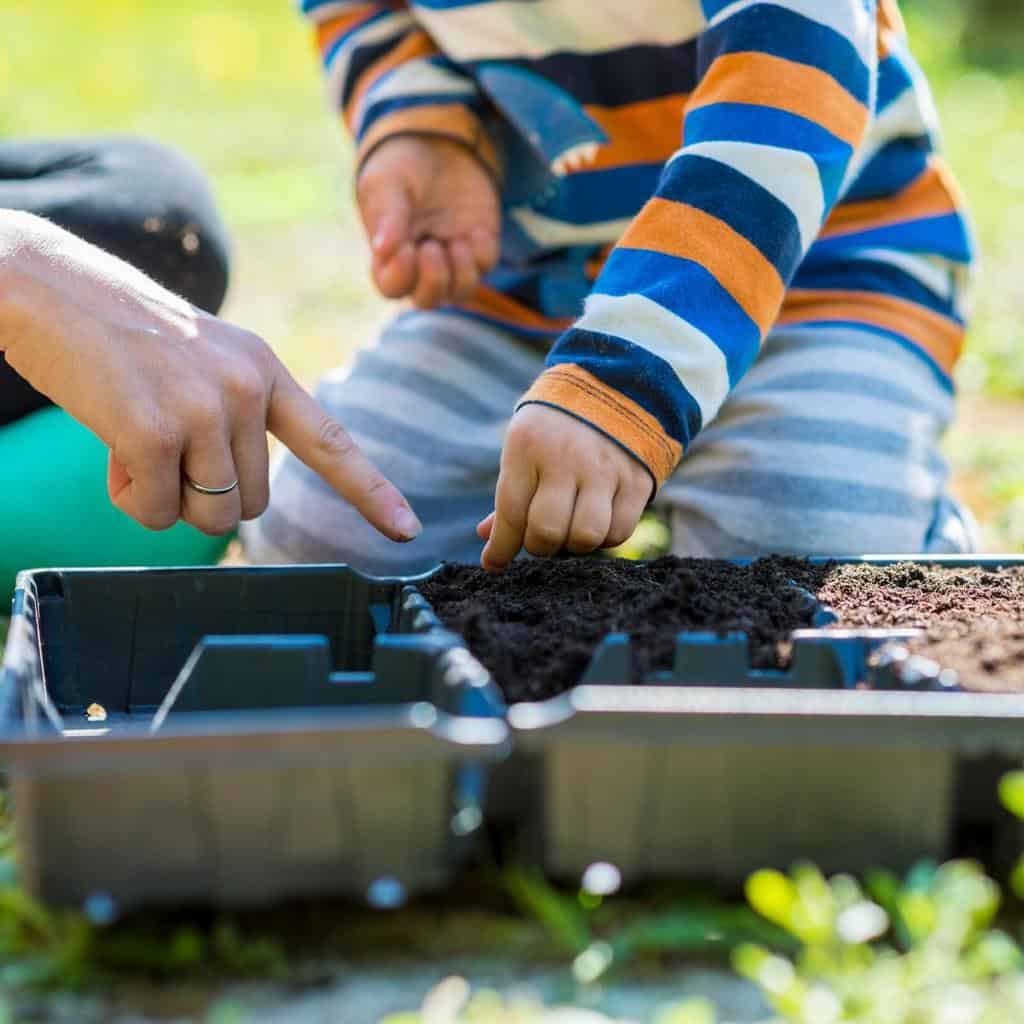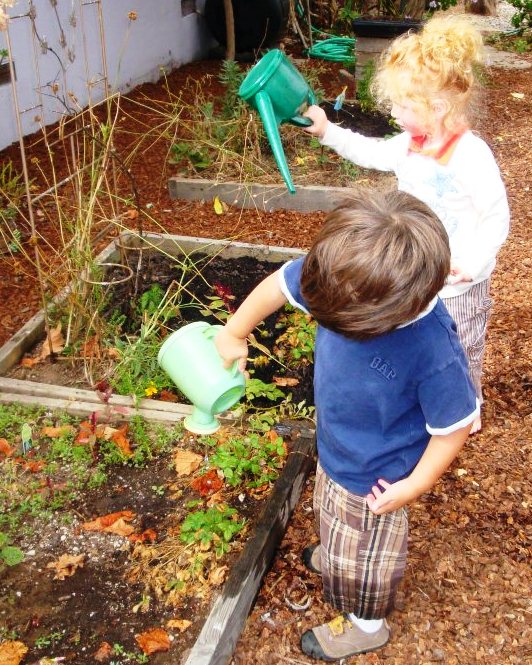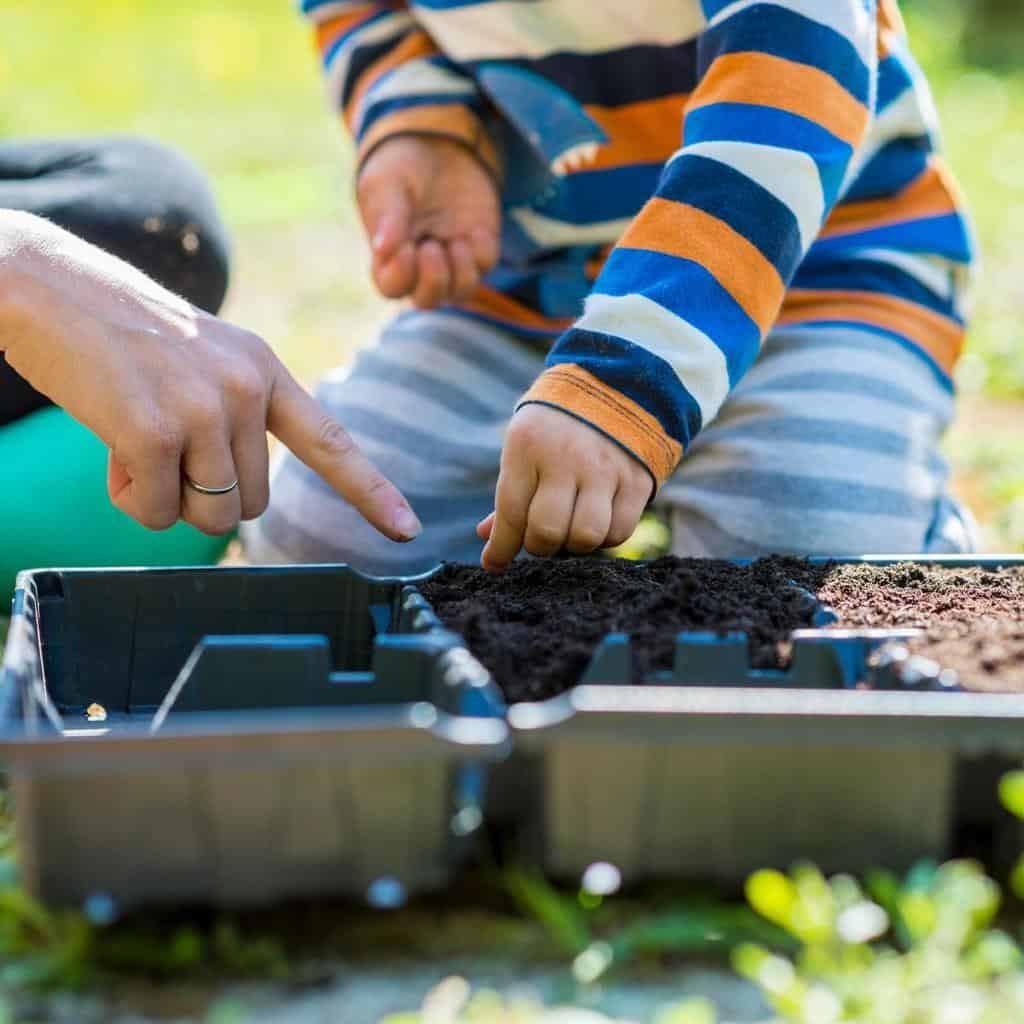March 14, 2021
The little brown bulb went to sleep in the ground,
In his little brown nightie, he slept very sound.
King Winter, he roared and he raged overhead,
But the little brown bulb didn’t move in his bed.
When Springtime came tip-toeing over the lea,
Finger to lips, as soft as can be,
The little brown bulb lifted his head,
Slipped off his nightie and JUMPED out of bed!

It is my pleasure to offer this cheerful little story for Spring and some suggestions for movements with children to act it out.
Little Seed’s Helpers
There was once a little boy who lived in a house surrounded by garden and field. There he spent his days playing and helping his mother tend to the plants, insects and birds.
One day as spring arrived, his dear mother gave him a handful of seeds and said, “Let us go into the garden to plant some new flowers in the earth.”
He held the seeds close and marveled at their smallness. “Mama, how do these tiny seeds become flowers? How do they not get lost in the dark ground?”
“Oh, the seeds have many friends to help, my love, like all of the plants in our garden and field,” she said.
“After we plant the seeds they lie asleep, so the water fairies come along and drip- drop on to their little heads and sing:
Wake up, wake up, you sleepy heads.
It’s time to rise out of your dreaming beds. (1)
Soon after the seeds pop open the root gnomes will come to stretch out the seeds’ little root legs, and sing:
Take hold, take hold with little roots,
It’s time to rise up to become little shoots. (2)
When the seeds have taken root, they begin to rise out of bed, tossing their blankets aside as they emerge from the ground. Then, the wind fairies come to help. They will tickle the little seedling leaves and sing:
Rise up your stem and leaves,
Stretch yourself and bend in the breeze. (3)
So the seedlings will unfurl their leaves and stretch them up to the sun growing taller with more leaves each day. They will no longer be little seedlings, but strong and sturdy plants. Then, a very special little bud will begin growing, round like a baby in her mother’s tummy (4). And the fire sprites of the sun will dance on their leaves, and prance upon the petals of the bud to open it up as they sing:
Welcome, welcome dear blossom bright.
Shine your colors in the sweet sunlight!” (5)
The young boy’s face shined with a smile, then. He took his mother’s hand and skipped into the garden to plant his seeds, eager to watch them grow into bright and colorful flowers in the sunshine.
Movements for the Play
This can certainly function as a puppet show, and in fact one year, I even created a special wool felted flower for it that was constructed with chenille stems in the petals and leaves so I could use my fingers to unfurl, dance and prance as the helpers. It was sweet, but I like that the story can also be used to encourage intentional movement. In this case, I have created two possible movements for each numbered verse in which a single child or group of children could engage, while the teacher tells the story and sings. I suggest singing the verses more than once.
First, I encourage you to practice the movements as a group, and tell the story separately. When practicing the movements, say something like, “We are going to pretend to be seeds tucked in bed, deep in the ground” becoming the seed for them to imitate, and move along through each movement. They may need some guided instruction or some physical input, but allow them as much as possible to come to it on their own, so go slowly. To develop a habit of intentional movement, we have to be slow and encourage slowness. Some children who want to hurry all the time may need lots of tries and patience for this, but they are often the ones who need it the most!
If you are going to have only one or two children acting out the seeds, choose some older children first who can model for their younger peers well. With some groups you might even be able to have one or two children pretend to be the fairy helpers. Lastly, end your story with a song and pause, or snuffing out of a candle to indicate the children may rise gently and leave the “stage”.
-
Children crouch on the ground on feet, curled up tightly as seeds. They could be wrapped in a special blanket or silk. Gently tap on their heads with fingertips and have the children give a little shake in response as a “waking up” gesture.”
-
Children rise slowly on two feet while continuing to curl their upper bodies and heads. Blankets fall to the floor. Gently squeeze and run hands down their root legs.
-
Walk your fingertips up the sides of their curled bodies, then arms to unfurl them. Children will uncurl to stand up tall, feet still spread as roots, arms uncurl and rise gently as leaves. You could have the children come to stand on the balls of their feet. Slowly bend in the breeze, too!
-
Children’s arms come together overhead, grasping onto opposite elbows as a bud.
-
Use fingertips to swirl along their arms, prance and tiptoe. Children unfold arms and lift them up to form the cup of the flower.
Alternately, these movements could be a bit more challenging-
-
Children curl up on ground, bottoms on the floor. Again, could be wrapped up in blankets or silks. Gently tap on their heads with fingertips and have the children give a little shake in response as a “waking up” gesture.”
-
Children remain on their bottoms and legs are slowly extended, pointing toes and giving them a wiggle. Children can shake gently to release blankets but keep upper bodies and head curled. Gently squeeze and run hands down their root legs and feet.
-
Walk your fingertips up the sides of their curled bodies, then arms to unfurl them. Children expand out, torsos tall, arms out, head tilts back slightly. Again, sway in the breeze!
-
Children contract themselves back into a “bud”, except their feet come off the ground to balance on their bottom and hug knees to their chests.
-
Use fingertips to swirl along their arms and backs, prance and tiptoe. Children keep balancing on their bottoms, open legs to press the bottoms of their feet together, holding on to ankles with hands and “rounding out” arms with a slight bend of the elbows. (At this point, the children may need to rest their legs on the ground criss-cross for the last lines of the story.)
It’s very satisfying to bring the joy of movement into stories for children. And for children who have a difficult time sitting for puppet shows or oral stories, stories with intentional movement may help develop their capacity for stillness and transition into being more capable to sit for other forms of storytelling.
Enjoy!


Do you spend lots of time outdoors with children? Our NEW course “Learning in Nature 2” begins on March 17th! Click the link below for details:
Learning in Nature 2: The Mystery and Wonder of Exploring Nature with Children
